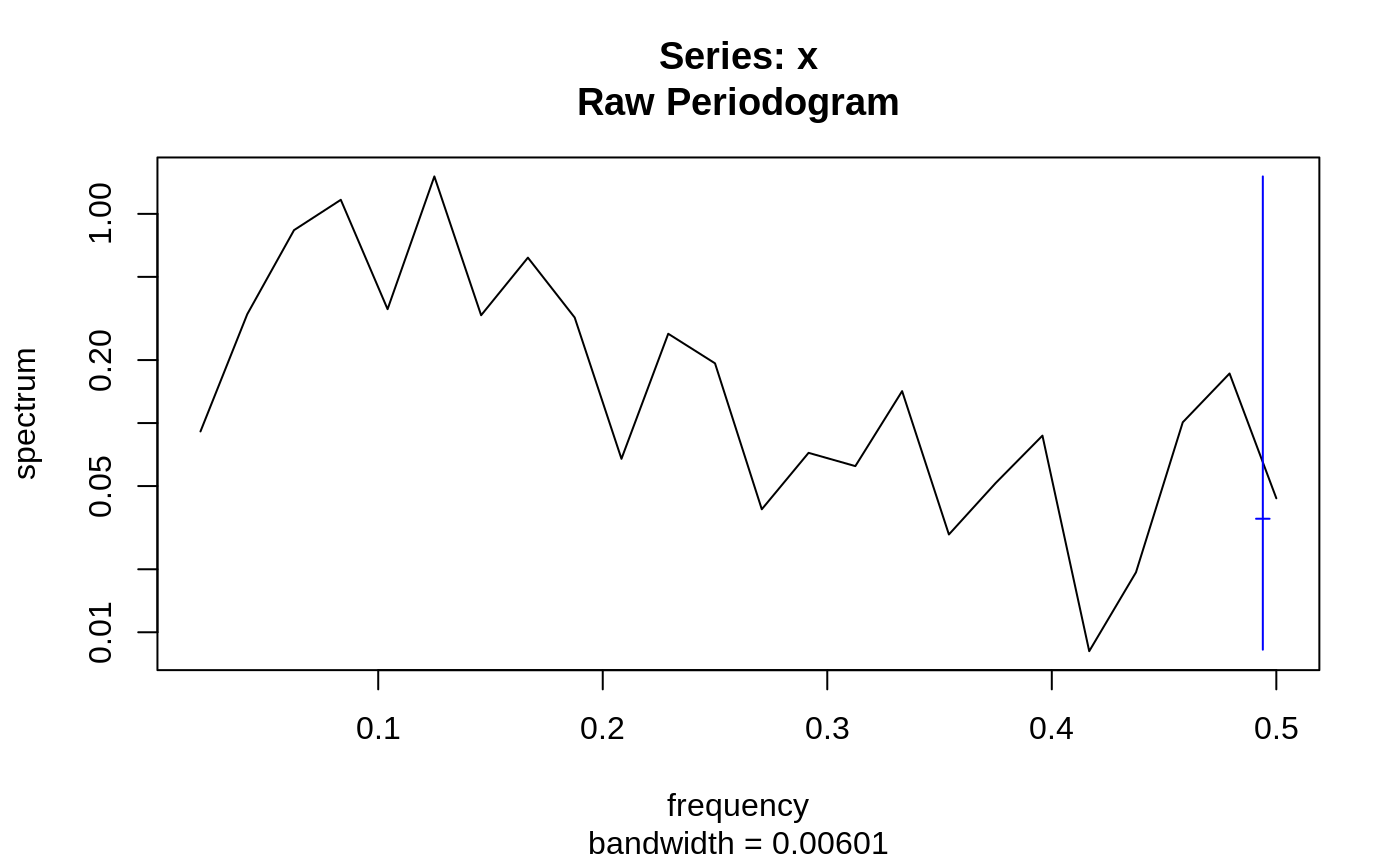Tidy summarizes information about the components of a model. A model component might be a single term in a regression, a single hypothesis, a cluster, or a class. Exactly what tidy considers to be a model component varies cross models but is usually self-evident. If a model has several distinct types of components, you will need to specify which components to return.
# S3 method for spec tidy(x, ...)
Arguments
| x | A |
|---|---|
| ... | Additional arguments. Not used. Needed to match generic
signature only. Cautionary note: Misspelled arguments will be
absorbed in |
Value
A tibble::tibble with two columns: freq and spec.
See also
Examples
tidy(spc)#> # A tibble: 24 x 2 #> freq spec #> <dbl> <dbl> #> 1 0.0208 0.0912 #> 2 0.0417 0.331 #> 3 0.0625 0.836 #> 4 0.0833 1.17 #> 5 0.104 0.350 #> 6 0.125 1.51 #> 7 0.146 0.328 #> 8 0.167 0.618 #> 9 0.188 0.320 #> 10 0.208 0.0675 #> # … with 14 more rows

